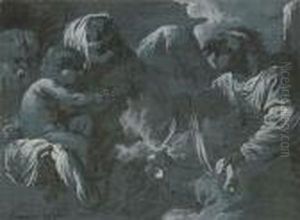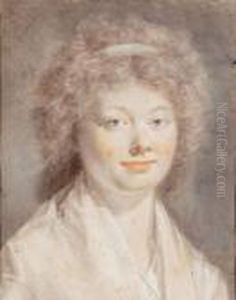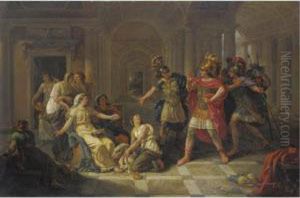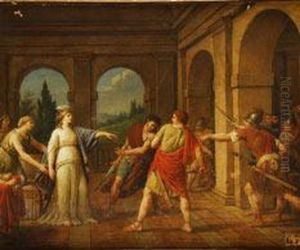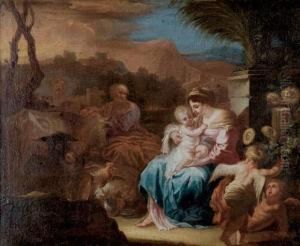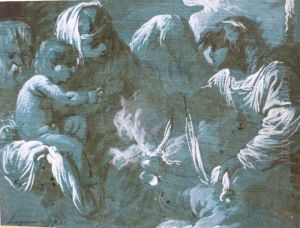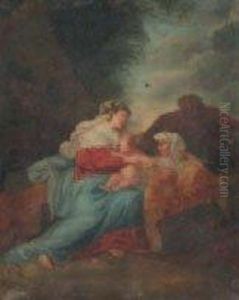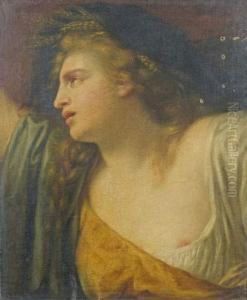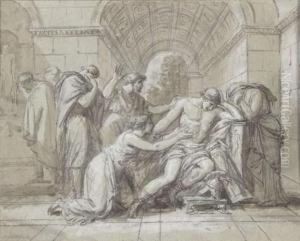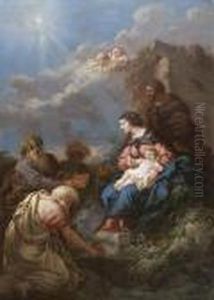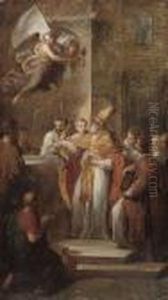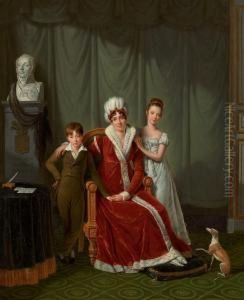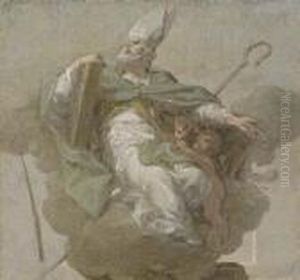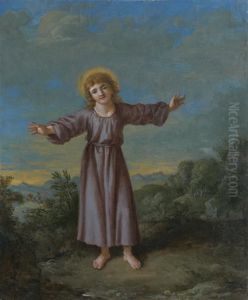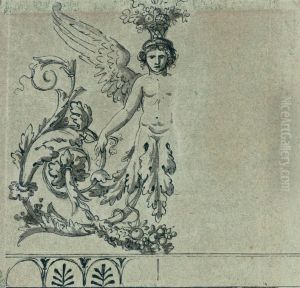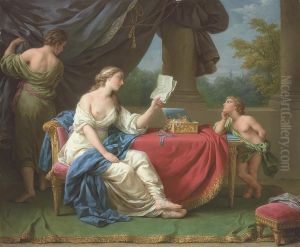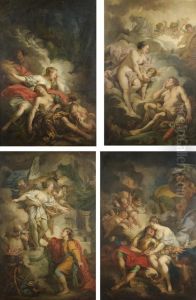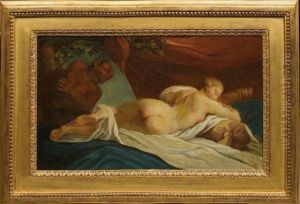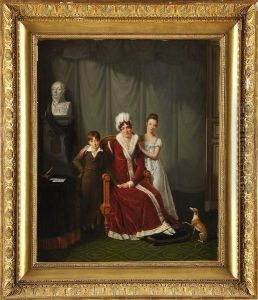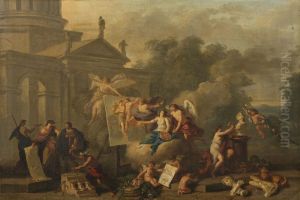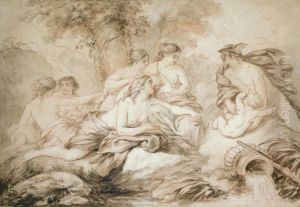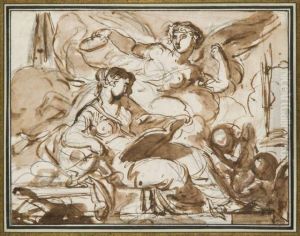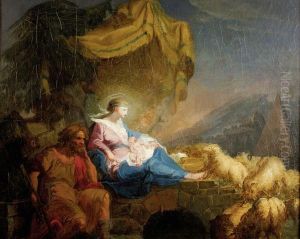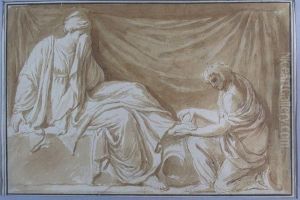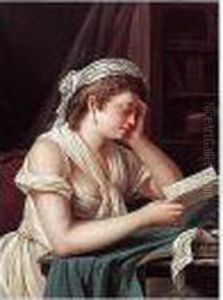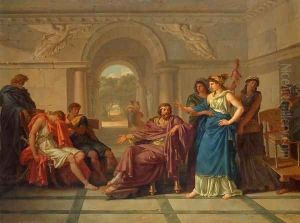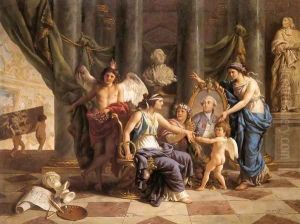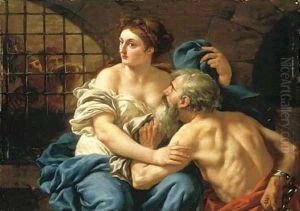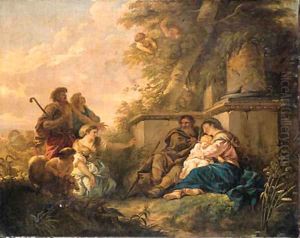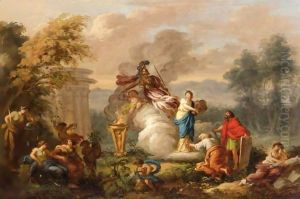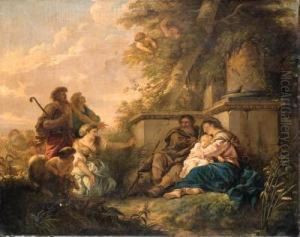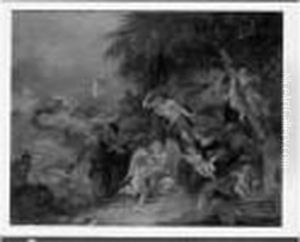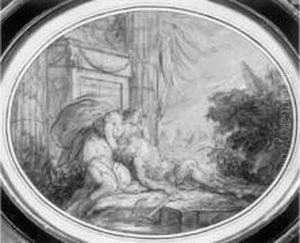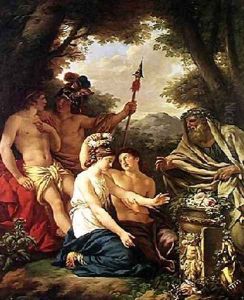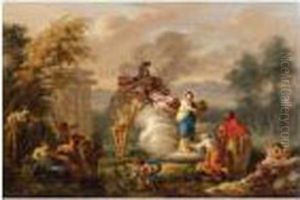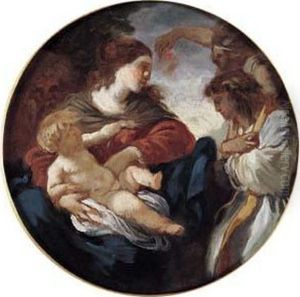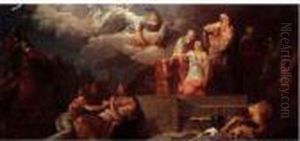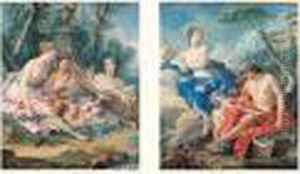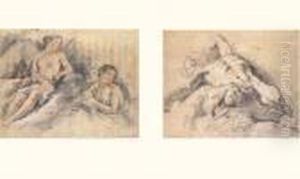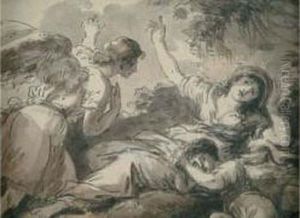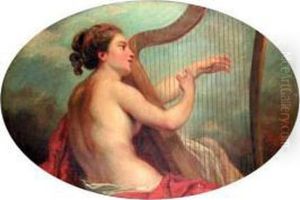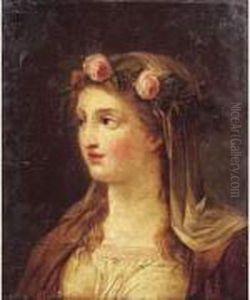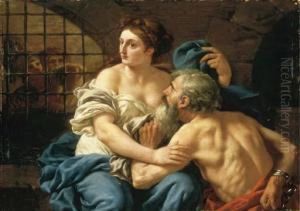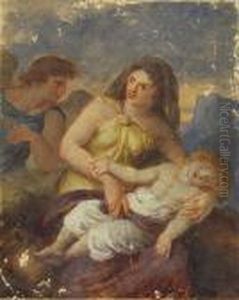Jean Jacques II Lagrenee Paintings
Jean Jacques II Lagrenée, also known as Louis-Jean-François Lagrenée or Lagrenée the Younger, was a French history painter and engraver born on October 18, 1739, in Paris, France. He was the younger brother of the more famous painter Louis-Jean-François Lagrenée, also known as Lagrenée the Elder. Despite the shadow cast by his brother's success, Jean Jacques II made a name for himself in the art world through his own merits and distinct style.
Jean Jacques II Lagrenée's artistic journey began under the tutelage of his brother and other prominent artists of the time. He was admitted to the Royal Academy of Painting and Sculpture in 1763 and won the coveted Prix de Rome the same year, which allowed him to study at the French Academy in Rome from 1763 to 1768. During his time in Rome, Lagrenée was heavily influenced by classical antiquity and the works of the Renaissance masters, which shaped his artistic style characterized by elegance, clarity, and harmonious compositions.
Upon his return to France, Lagrenée continued to develop his craft and began to receive commissions for religious and historical works. He was well-regarded for his ability to distill complex narratives into visually coherent and aesthetically pleasing scenes. His paintings often featured mythological and allegorical subjects, rendered with a delicate touch and a keen eye for detail.
Throughout his career, Lagrenée exhibited at the Salon, the official art exhibition of the Académie des Beaux-Arts in Paris. Despite the political upheaval of the French Revolution and the changing tastes in art, he managed to maintain a certain level of success. In 1781, he was appointed an assistant professor at the Royal Academy, and later, during the reign of Napoleon, he was named a member of the Legion of Honor.
Jean Jacques II Lagrenée's contributions to the art world also included his role as an engraver. He created a number of engravings that captured the essence of his and others' paintings, thereby disseminating his work and that of his contemporaries to a wider audience.
Lagrenée's work was characterized by its refined elegance and adherence to the principles of classical art. Even as Neoclassicism gained prominence towards the end of the 18th century, he remained true to his style, which was rooted in the traditions established by earlier French masters. His paintings are notable for their clear compositions, graceful figures, and a delicate use of color.
Jean Jacques II Lagrenée passed away on June 19, 1821, in Paris. Although he may not have achieved the same level of fame as his brother or some of his contemporaries, his work remains an important part of the French artistic heritage of the late 18th and early 19th centuries. His paintings can be found in various museums and collections around the world, where they continue to be appreciated for their beauty and historical value.
